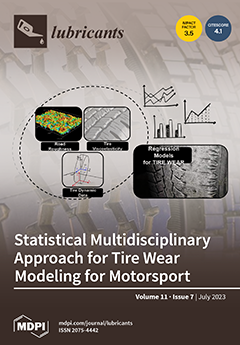Recently, high-Cr multicomponent white cast iron after quenching is known to have superior abrasive-wear resistance. However, this material is prone to cracking due to the precipitation of very hard carbides resulting in very limited application. However, the cracking tendency might be reduced by
[...] Read more.
Recently, high-Cr multicomponent white cast iron after quenching is known to have superior abrasive-wear resistance. However, this material is prone to cracking due to the precipitation of very hard carbides resulting in very limited application. However, the cracking tendency might be reduced by appropriate tempering temperature. Therefore, the three-body abrasive-wear resistance of 18 wt.% and 27 wt.% Cr based on 3 wt.% Mo, W, V, and Co with different temperatures of tempering was studied. These are abbreviated as 18Cr MCCI and 27Cr MCCI. The tempering temperature range was 653–813 K with an interval of 20 K after the quenching process. The quenched specimens were used as comparison materials, and three tempered specimens were selected. Thus, there are quenched (Q), quenched-tempered at low temperature (T
LT), quenched-tempered at medium temperature (T
MT), and quenched-tempered at high temperature (T
HT) specimens. From the results, it can be known that the wear resistance of the material decreases as Cr percentage and tempering temperature increase. Therefore, the 18Cr MCCI Q has better wear performance than specimens of other conditions. Yet, different results occur in the group of 27Cr MCCI. The material is more wear-resistant after tempering despite the lower hardness of the material. This might be owing to the higher fracture toughness of the M
7C
3 carbide, which is higher after the tempering process compared with quenching only. Therefore, it can be said that it is important to maintain the hardness of the material to achieve better wear resistance. However, in materials containing large M
7C
3 carbides, the fracture toughness of carbides should also be considered.
Full article





